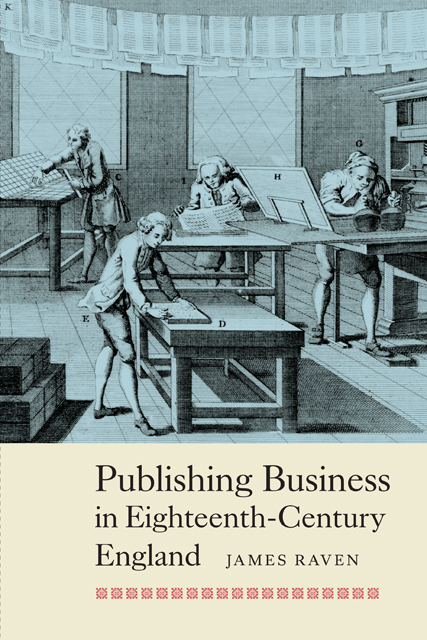Book contents
- Frontmatter
- Dedication
- Contents
- Acknowledgements
- Notes on Dates, Booksellers, Founts and Intaglio
- List of Abbreviations
- 1 The Mediation of the Press
- 2 England and the Uneven Economic Miracle
- 3 The Printed and the Printers
- 4 Serviced by Stationery and Printing
- 5 Printing and the City of London
- 6 Advertising
- 7 The Advertisers
- 8 Intelligence
- 9 Instruction and Guidance
- 10 Wider Discussion
- 11 Business, Publishing and the Gentleman Reader
- Conclusion
- Bibliography of Printed Sources
- Index
- Frontmatter
- Dedication
- Contents
- Acknowledgements
- Notes on Dates, Booksellers, Founts and Intaglio
- List of Abbreviations
- 1 The Mediation of the Press
- 2 England and the Uneven Economic Miracle
- 3 The Printed and the Printers
- 4 Serviced by Stationery and Printing
- 5 Printing and the City of London
- 6 Advertising
- 7 The Advertisers
- 8 Intelligence
- 9 Instruction and Guidance
- 10 Wider Discussion
- 11 Business, Publishing and the Gentleman Reader
- Conclusion
- Bibliography of Printed Sources
- Index
Summary
The commercial practices and customer services associated with a developing ‘consumer mentality’ are now standard features of economic histories of eighteenth-century England. Much of this almost wholly domestic consumer activity, whether emulative buying or the entrepreneurial stimulation of demand, would have been impossible without the extension of jobbing printing after 1700. From the first decades of the century, the increase in the number of printing houses and improvements in engraving, letterpress typography and paper-making served merchants, manufacturers and retailers. Less obvious activities of the local printer also encouraged market development. The distributional services of the pressman and stationer were used by many different trades. The printing house became a convenient accommodation address and a centre for the co-ordination of projects and lobbying related to the extension of local business.
The clearest contribution made by print to the promotion of local commerce, however, was in advertising. Advertisements have been studied from a variety of perspectives, and the historical relationship between advertising and the creation of a local mart for goods and services has been the subject of renewed investigation. Much greater understanding of eighteenth-century advertising in England is now possible, especially given advances in newspaper history. Several focused studies of the role of advertising in the eighteenth century have also provoked fierce debate about whether saturation advertising and other related techniques are a sign of weakness or strength. Connections between bibliographical and printing history and the advance of advertising have been meagre, however. Although printed advertising dates from the first century of moveable type, it was not until the late seventeenth century that the printing of bills and advertisements became a common business practice. Merchants commissioned printed pieces for negotiating and monitoring transactions and for informing agents of wares for sale. Even in London, however, there is little evidence to suggest that many general tradesmen and storekeepers adopted regular printed advertisements much before 1700. At that date, the actual term ‘advertisement’ had been in common currency for a few decades only. Earlier advertising was sufficiently small in scale to make the new initiatives of the London and regional printers appear both bold and innovatory.
- Type
- Chapter
- Information
- Publishing Business in Eighteenth-Century England , pp. 114 - 134Publisher: Boydell & BrewerPrint publication year: 2014

